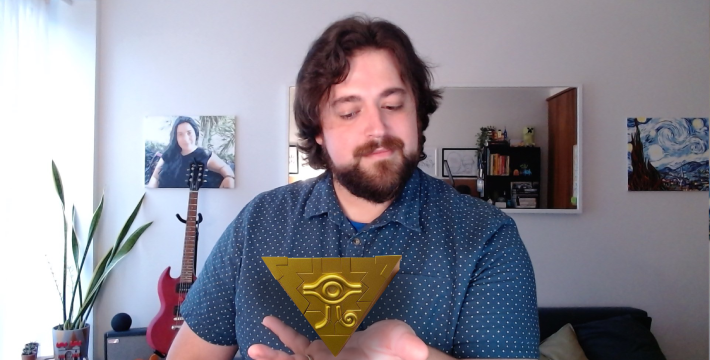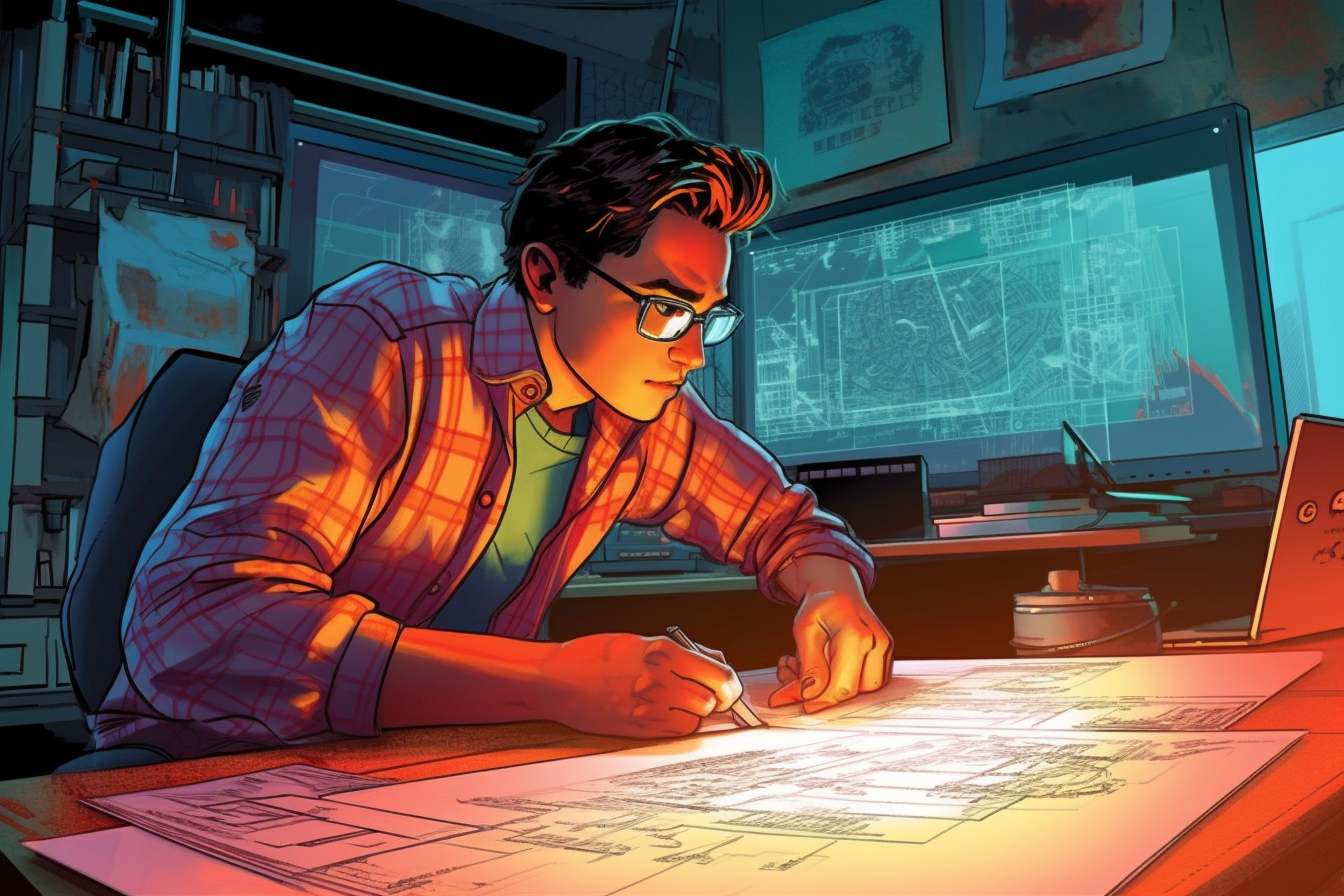
The Inverted Pyramid of Problem-Solving
About two decades ago, I was just a college student who found immense pleasure in crafting lines of code during my free time. A chance encounter with a friend led to a recommendation, and before I knew it, I had bagged my first software engineering job. The thought of transforming my hobby into a career felt akin to the excitement of unboxing a new gadget or stumbling upon a shortcut in your favorite video game. It was a rush of emotions - curiosity, anticipation, and a hint of stage fright.
After all, at its core, the art of software engineering is about problem-solving - taking a complex issue, breaking it down into manageable parts, and crafting an elegant solution. As I quickly discovered, this process rarely involves simply following a list of predefined instructions.
The transition from college coding to professional software engineering was, however, much rougher than a game of Flappy Bird. At the outset, I expected the company to spoon-feed me tasks and solutions to implement, following the classic ‘monkey see, monkey do’ approach. Little did I know, I was in for a surprise.
As I progressed through my career, I discovered that the journey of a software engineer isn’t a flat line—it’s an inverted pyramid. Picture a pyramid turned upside-down, each level representing a new stage in problem-solving maturity, with a widening scope of influence and impact as you ascend.
Stage 1: The Couch Potato - “I’ll just wait here for instructions.”

Now, reflecting back, I recognize that I started my career in what I now affectionately call the “Couch Potato” stage. Here, much like a couch potato flipping through channels, I passively waited for my superiors to feed me tasks and tell me how to perform them.
There’s an undeniable simplicity to this stage, a comfort in its clarity. It is a stage where you’re given a problem with its solution, and your mission is to execute it as skillfully as possible. In this stage, the emphasis is on refining technical skills and learning to implement solutions effectively. There’s something satisfying about this mode of work, it’s similar to solving a puzzle where all the pieces are given to you, and your job is to assemble them.
However, while it’s a necessary and often formative stage, the Couch Potato mode isn’t without its limitations. Staying in this stage can curtail your growth, keeping you boxed into a reactive role. It limits your potential influence and impact, turning you into a passive player on the team rather than an active contributor.
This stage has its value, though. It’s where we all start, cutting our teeth on assigned tasks, learning the ropes, and becoming proficient in our chosen programming languages. We grow from these experiences, but to maximize our impact as software engineers, we must strive to evolve, to climb higher up the pyramid. And the first step towards doing that is to transform from a passive observer to a vigilant firefighter, which leads us to the next stage of our journey.
Stage 2: The Firefighter - “Houston, We Have a Problem.”

As we ascend the inverted pyramid, we step into the “Firefighter” stage. Here, the challenges are akin to the unexpected flames a firefighter would face, appearing without warning and demanding immediate attention.
Your role at this stage involves more than solving assigned problems. You organically identify potential issues, much like a firefighter looking out for smoke. It might be noticing a defect in your product or foreseeing an issue with your team’s current course of action. This ability is built over time, as exposure to various challenges helps your limbic brain make connections, developing what you could call a “gut instinct” for problem detection.
The Firefighter stage calls for a shift from passive problem-solving to a proactive, problem-identifying approach. It demands analytical thinking, a keen understanding of the larger system, and the initiative to not only identify but also evaluate the severity of problems.
However, the key challenge in this stage lies in critically assessing the problems you’ve identified. Not all issues carry the same weight, potential impact, or cost, and determining these factors requires mental effort. While it may be tempting just to highlight a problem and expect others to make the assessment, it’s neither efficient nor professional. Especially when you discover a problem while working on a related task, you’ve already built a context about the situation and its circumstances. It’s faster and less costly for you to evaluate the problem using this knowledge than for others to rebuild the context from scratch.
While this stage offers a broader impact than the Couch Potato stage, it has its limitations. Yes, you’re identifying problems now, but you’re often merely pointing out fires. The focus is still largely on immediate issues, and there’s not much room for strategic, long-term thinking or considering the broader implications of your work. You are quick to call out problems, but proposing solutions isn’t yet your strong suit.
This stage represents a substantial step in your growth as a software engineer, but it should not be your final destination. Yes, you’re identifying problems now, but the next stage of our journey requires us to go one step further: from identifying problems to suggesting solutions, thus morphing us from firefighters to innovators.
Stage 3: The Innovator - “Here’s what we can do.”

At this juncture on our inverted pyramid, we encounter what I dub as the “Innovator” stage. This stage is the stepping stone to transforming from a problem-pointer to a problem-solver.
You might have come across the saying, “Don’t come to me with problems, come with solutions.”. Sure, if this statement is a recurring theme at your workplace, it may be time to spruce up your LinkedIn profile. However, hidden within this oft-misused sentiment lies an essential progression in our problem-solving journey: the pivot from identifying issues to proposing solutions.
As an Innovator, you’re not only adept at spotting issues, but you’re also comfortable enough with the system to propose at least one viable solution for every problem you identify. Instead of pointing out the defects or hurdles, you’re actively involved in thinking about and suggesting ways to tackle these issues.
Now, your role takes on a more vibrant hue. You are proactively conceptualizing strategies instead of merely reacting to problems. You use your skills and your familiarity with the system to anticipate problems and design solutions, understanding their potential impact.
But remember, the Innovator stage isn’t the summit of our pyramid. It’s a critical leap forward, but there’s still more to aspire to. There’s a stage above that requires us to think strategically and present various solutions for a single problem, marking our evolution into true strategists. Let’s keep climbing!
Stage 4: The Strategist - “Here are a few ways we can approach this.”

Welcome to the “Strategist” stage. This level is characterized by an advanced level of problem-solving maturity. As a Strategist, you don’t merely identify problems or suggest one solution. Instead, you present multiple potential solutions for every problem you encounter, along with a comprehensive understanding of the benefits and drawbacks of each.
This stage indicates a significant progression in your approach. You’ve moved beyond executing pre-defined solutions or suggesting singular fixes to complex problems. Instead, you’ve developed the ability to analyze situations from various perspectives, comprehend the multifaceted nature of challenges, and generate multiple strategies to overcome them.
It’s like standing at a crossroads and carefully considering all possible paths before making a decision. Each path has its advantages and disadvantages, and as a Strategist, your role is to lay out all these paths, articulating their merits and demerits, for your team to deliberate over.
While this stage requires a deeper understanding of the system, it’s not about being the smartest person in the room or having all the answers. It’s about fostering a collaborative decision-making environment. You help build a more comprehensive picture of each problem, sparking conversations and enabling your team to collectively choose the best course of action.
This approach undoubtedly enriches the problem-solving process and improves the team’s collective decision-making. But we’re not done yet. Now, let’s take the final step to reach the apex of our pyramid, where we blend conviction with flexibility and truly become visionaries.
Stage 5: The Visionary - “I believe this is our best way forward, but let’s discuss.”

At last, we have arrived at the pinnacle of our inverted pyramid - the “Visionary” stage. In the immortal words of Spock from Star Trek, “Change is the essential process of all existence.” As a Visionary, you’ve mastered the art of balancing conviction with flexibility. You propose multiple solutions to problems, understand their trade-offs, have a clear preference for one, and can effectively advocate for it. Still, you remain open to other perspectives, willing to adjust your preference if a more compelling solution emerges from the discussion.
This stage embodies the epitome of impactful problem-solving. Here, you are not only a problem identifier, a solution generator, or a strategy presenter, but you also serve as a thoughtful leader, guiding the decision-making process.
Imagine being a guide leading a team up a challenging mountain trail. You’ve done your homework, analyzed the terrain, and you’re suggesting what you believe is the best route. Yet, you’re open to input from your team, ready to adjust the route if they present compelling reasons based on their own experiences or observations.
Having a preference and advocating for it shows that you’ve considered the different options, compared their trade-offs, and formed a reasoned judgment about the best course of action. It also means you’re ready to take responsibility for the decision. Yet, the willingness to change your mind highlights your humility and recognition of the collective wisdom of the team.
This approach fosters an environment where the best ideas win, decisions are made collectively, and everyone feels heard and invested in the outcome. However, remember that reaching the Visionary stage doesn’t mean your journey is over. Climbing to the top of the pyramid is not the only goal. Maintaining your position and continuing to develop your skills is the desired destination. You may oscillate between stages, or find new heights to explore. The key is to keep evolving, keep learning, and keep contributing to your team’s success.
Bonus Stage: The Thought-Provoker - “Here’s a problem. What do you think we should do about this?”

Now, I’d like to discuss a little secret, a hidden level in our problem-solving game if you will. As we progress through the stages of the inverted pyramid, we become quite adept at identifying problems, proposing solutions, and understanding trade-offs. Yet, every now and then, we find ourselves facing a problem that has us stumped. It’s like being confronted with a tough puzzle in a video game, and no matter how hard you try, you can’t figure out the solution.
During these moments, it’s easy to feel like we’ve tumbled down the pyramid, right back to the Couch Potato or the Firefighter stage. But here’s the key thing to remember: even if you can’t find a solution, it doesn’t mean you’ve lost all the ground you’ve gained.
What makes the difference is a simple yet powerful follow-up question: “What do you think we should do about this?” By asking this question, you’re doing two important things. First, you’re acknowledging the problem and indicating your intention to address it, rather than simply pointing it out. Second, you’re inviting collaboration, fostering a shared sense of responsibility, and empowering others to contribute to the solution.
Although this approach could help you save face when you’re drawing a blank, it’s also a genuine strategy for problem-solving, one that recognizes the power of collective thinking and the value of diverse perspectives. Plus, it changes the dynamic of the conversation. You’re no longer the one who’s only good at pointing out problems, but the one who actively seeks to solve them and encourages others to do the same.
So the next time you encounter a problem that leaves you scratching your head, remember the Thought-Provoker stage. Use it as an opportunity to engage your colleagues in a dialogue and collaboratively find the way forward. After all, problem-solving is a team sport, and the best victories are the ones we achieve together.
Conclusion

From a novice “Couch Potato” to a decisive “Visionary” and a “Thought-Provoker”, the journey of a software engineer is a transformative adventure, marked by continuous growth and evolving problem-solving skills. The inverted pyramid of problem-solving illustrates this progression, shedding light on the different stages of maturity and their corresponding roles and responsibilities.
But remember, this pyramid is not a rigid ladder with fixed steps. It’s an evolving framework, a compass that helps guide your journey. It’s natural to oscillate between stages or discover new ones along the way. What’s important is that you continue to strive for growth, both as an individual and a team member. After all, problem-solving isn’t only about having the right answers. It’s about asking the right questions and fostering collaboration, while continuously learning and adapting.
Moreover, don’t forget the power of the “Thought-Provoker” stage, a secret weapon that can be unleashed when faced with a challenging problem. It reminds us that we don’t always have to have all the answers. Instead, inviting others to share their perspectives and collaborate in the problem-solving process can lead to more effective and inclusive solutions.
Ultimately, the essence of being a software engineer, or indeed any professional, is not about how well we can follow a script, but how effectively we can navigate the unpredictable, complex, and exciting landscape of problem-solving. As you continue to climb the inverted pyramid, remember that each stage offers valuable insights and experiences, equipping you with the tools you need to scale the heights of impact. Embrace the journey, rise to the challenges, and become the problem-solving champion you are destined to be!
Until next time! – Tasos
Become a DrinkBird Insider
Never miss a post! Get the latest articles on tech and leadership delivered to your inbox. Sign Me Up Sent sparingly. Your privacy is a priority. Opt-out anytime.
Recommended Books
Full disclosure: the following are Amazon affiliate links. Using these links to buy books won't cost you more, but it will help me purchase more books. Thank you for your support!









